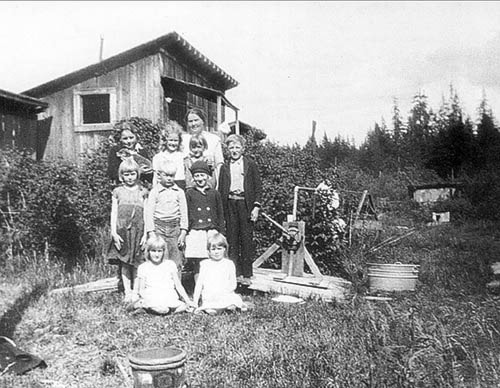We all have a neighbourhood. Whether it’s rural, urban, suburban or a mix, we all have a zone we consider local to us.
For some, it includes where they shop and get their mail, where their children go to school and where the family attends church.
For others, it’s as simple as the zone you cover with your children on Halloween or where you walk your dog.
Even in the most dedicated of ‘bedroom’ communities, there are interactions between people, their neighbours and local institutions.
People used to take this sort of community for granted. These were the people you grew up with, whose children you played with, whose apples you may have nabbed and whose role in your life was understood.
It wasn’t just mother who minded the children – you were as likely to be reprimanded by a neighbour as one of your parents.
This was an important element in the freedom of children.
Their parents were secure in the knowledge that someone would either call a halt or come to the rescue as needed.
We can never go backwards.
We don’t have those old-fashioned neighbourhoods any more, where people lived for multiple generations and hardly anyone moved away.
Instead, we have to work a bit harder to get the good parts of those communities back through modern means.
In Maple Ridge today, there are several community associations through which people can become more involved with their neighbours, until those neighbours become friends.
Shared issues and opportunities, neighbourhood-based projects or celebrations, and goals for the future all serve to unite and inspire the group of strangers who are the most common starting point for a community association today.
Our museum and archives support the idea of communities and their associations whole-heartedly by providing history that the modern community can share and celebrate.
The museum is a means to graft common roots on people who have previously had nothing in common beyond suddenly sharing geography.
We have our established historic neighbourhoods that are based around early postal services, but that does not mean we are restricted to just those neighbourhoods.
Changes in transportation and access and increased population have given us more neighbourhood options than we have ever had before.
Any group of people who wish to develop a neighbourhood community, based around a school, for example, should contact the museum for the history of that area as they will be surprised how rich it is, even outside the official lines.
For today’s picture, we have a group of neighbourhood children in one community that has an active community association today – Webster’s Corners.
In this instance, the supervising mother is Mrs. Rajala, mother of Eleanor (standing at left, second row from the front) and Toi, standing behind his sister holding their puppy, Bingo. The rest of the children represent the Katainen, Kukkola, Ranta and Latomaki families – all from the Finnish community in Webster’s Corners.
Later this month, on June 22 in Webster’s Corners Park, the Webster’s Corners Community Association will celebrate their neighbourhood day for the 14th year.
Representatives of that same Finnish community will attend and have tea and talk about old times.
The museum will be there with a large historical display and there will be activities for all ages. Come and share the community spirit.
Val Patenaude is director of Maple Ridge Museum.
